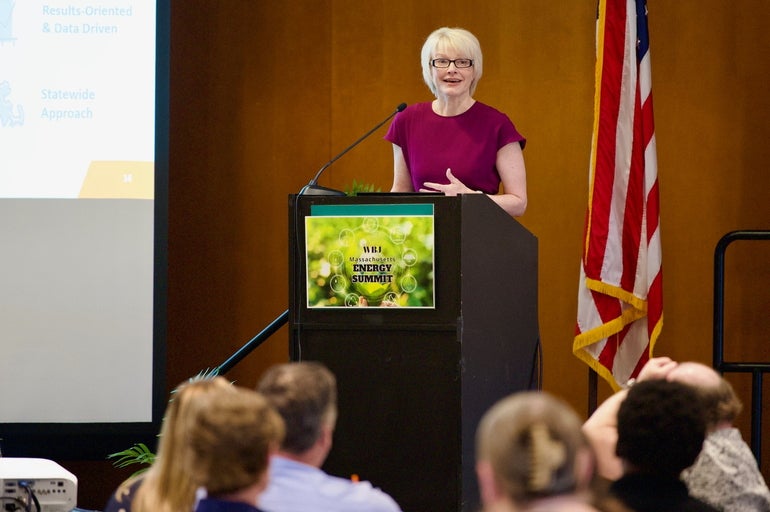About 115,000 people are now employed in the Massachusetts clean energy industry, with Worcester playing a key role in the industry’s ecosystem, according to the head of the quasi-state economic development agency tasked with supporting the sector.
Speaking at WBJ’s Mass Energy Summit on Wednesday, Massachusetts Clean Energy Center CEO Emily Reichert said the industry has grown 100% since 2012, when the state first started tracking industry jobs.
“We now have 115,000 direct jobs, and that rivals the number of jobs for colleges and universities in Massachusetts,” Reichert said. “So it’s a big number. When you add in indirect jobs, that number jumps to 233,000.”
The state has about 7,500 businesses which are related to clean energy, with 58% of them being small businesses and 74% located outside the Greater Boston area, Reichert said.
“Worcester already has a very strong — probably the second strongest — ecosystem for climate technology in Massachusetts, after the Boston, Cambridge, Somerville area,” she said. “There’s already a lot going on here in Worcester, when you think about startups and businesses in this industry and other supporting entities like the universities. When looking at Central Mass. and the Worcester area in particular, we’ve identified that there is already a cluster around energy storage and industrial decarbonization, as well as bio manufacturing, which can have climate tech applications.”
Speaking about how technology can impact the management of the region’s power grid, Morgan Steacy, vice president, connections & strategic accounts, for National Grid’s Massachusetts market, said the system operates at peak capacity for only a short amount of time per year, but this peaking can have a big impact.
“There’s a lot of untapped potential around how we reduce our peaking,” Steacy said. “We only peak on our system about 85 hours a year. But that top level of energy usage is the most expensive from a generation perspective, and we need to think about how we operate the grid smarter.”
During a panel on energy efficiency, resiliency planning, and state incentives, State Rep. Jeffrey Roy (D-Franklin) spoke about the impact of the President Donald Trump Administration’s targeting of clean energy-related incentives.
“It’s frightening,” Roy said. “For example, we were counting on millions of federal dollars to help us build the infrastructure for electric vehicles. The federal government has taken that away. If you want to get to 900,000 electric vehicles by 2030, which is part of [the state’s] plan, you need about 13,0000 or 14,000 chargers. We have only half of those in place today. With money that we were going to have from the federal government being taken out from underneath us, that makes it difficult, but Massachusetts is continuing to persevere.”
Even with the difficulties at the federal level, Roy highlighted the use of geothermal energy at the new Tri-County Regional Vocational Technical High School in Franklin as one example of the state’s commitment to becoming carbon neutral by 2050, noting MassCEC played a role in making the installation of geothermal work from a financial standpoint.
Eric Casey is the managing editor at Worcester Business Journal, who primarily covers the manufacturing and real estate industries.

